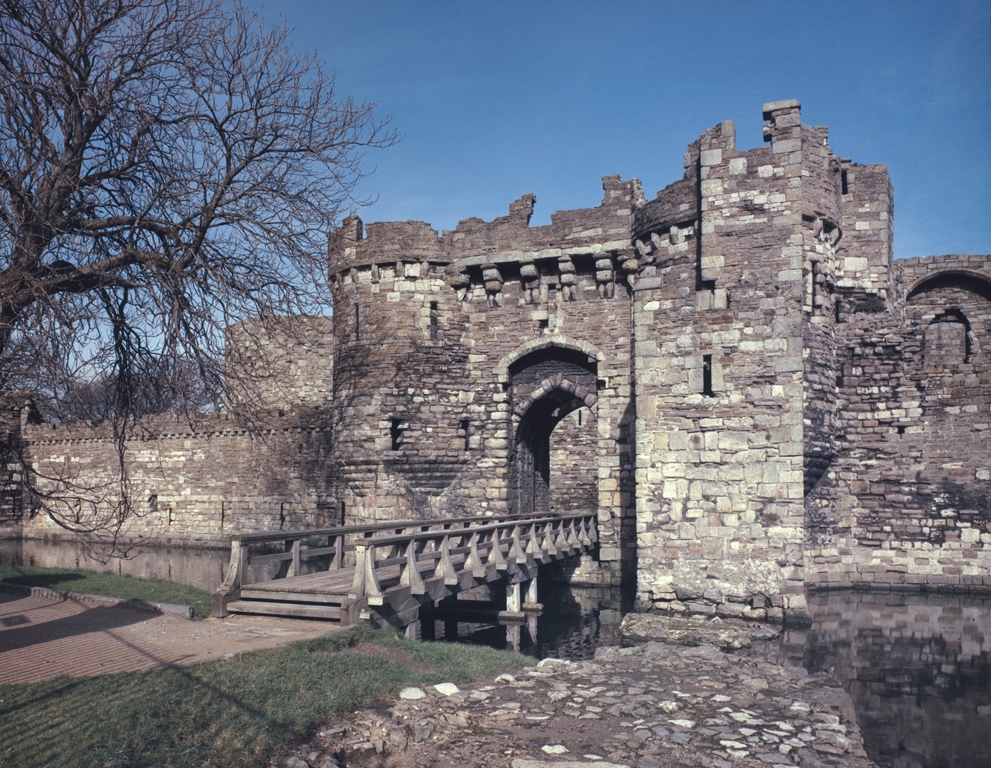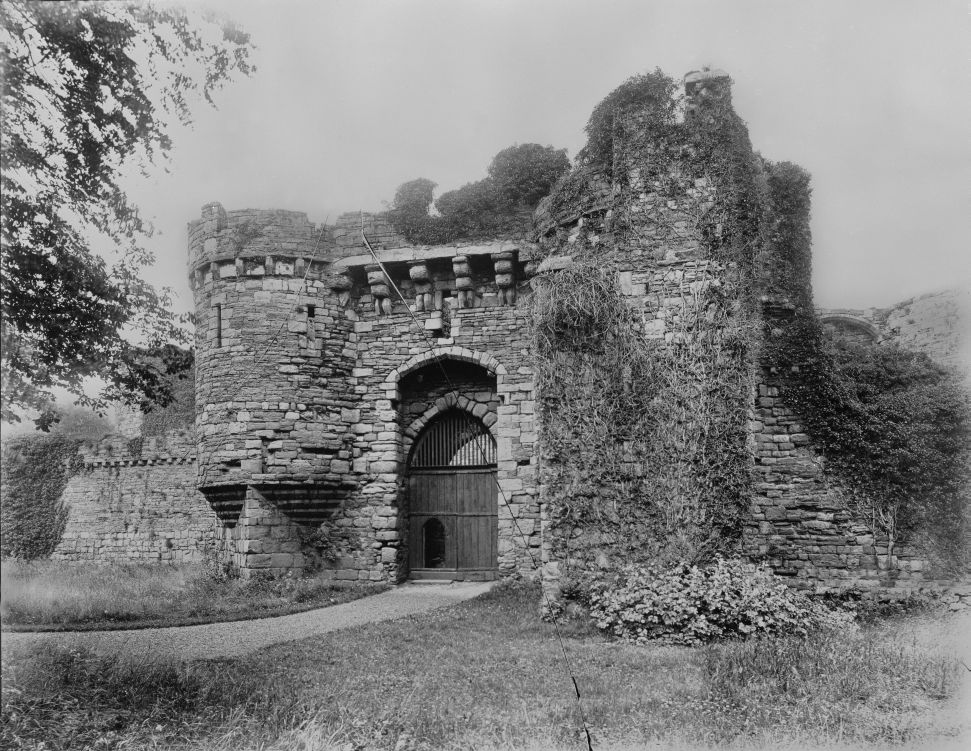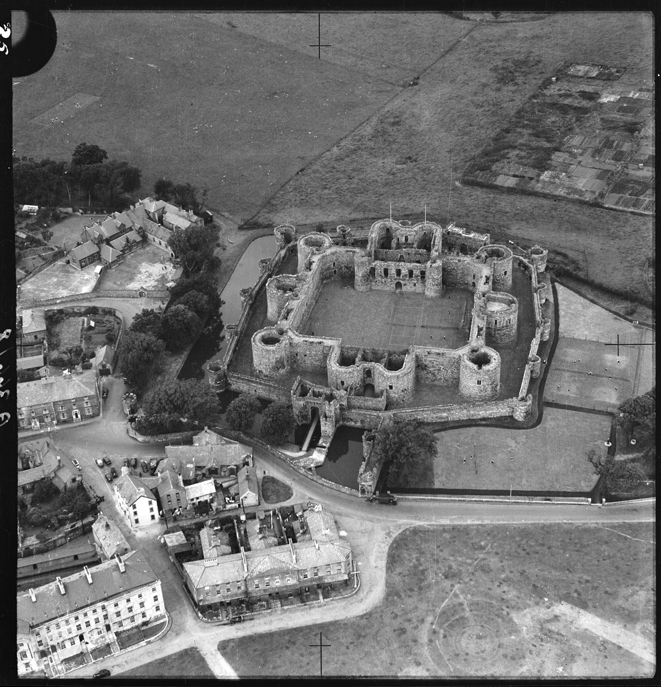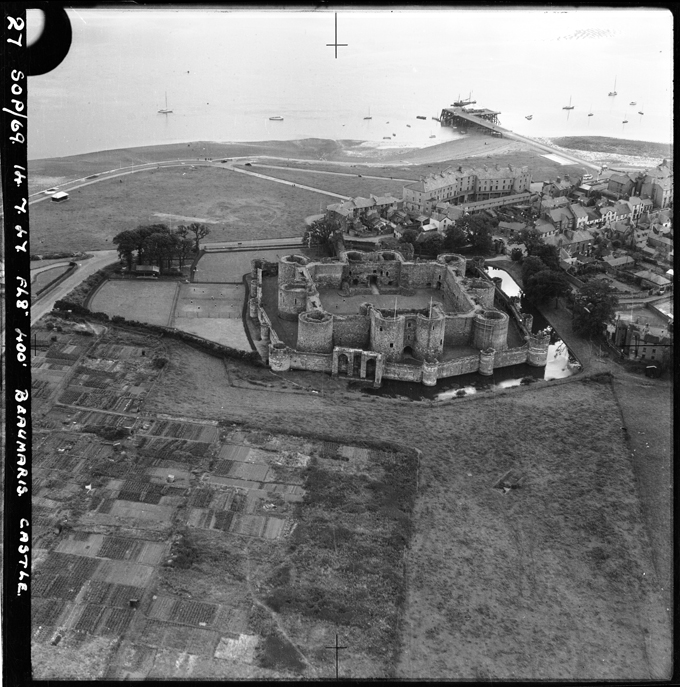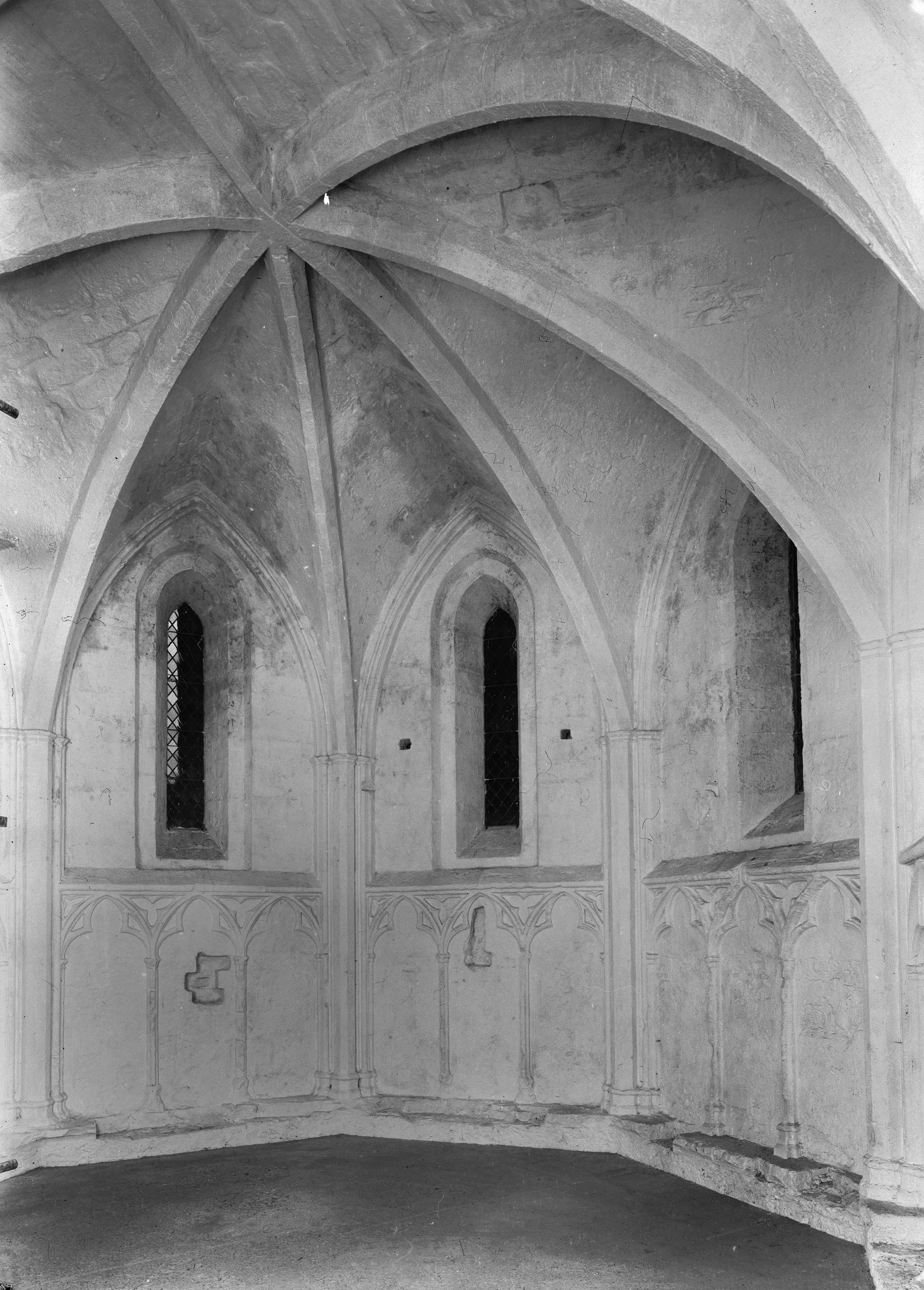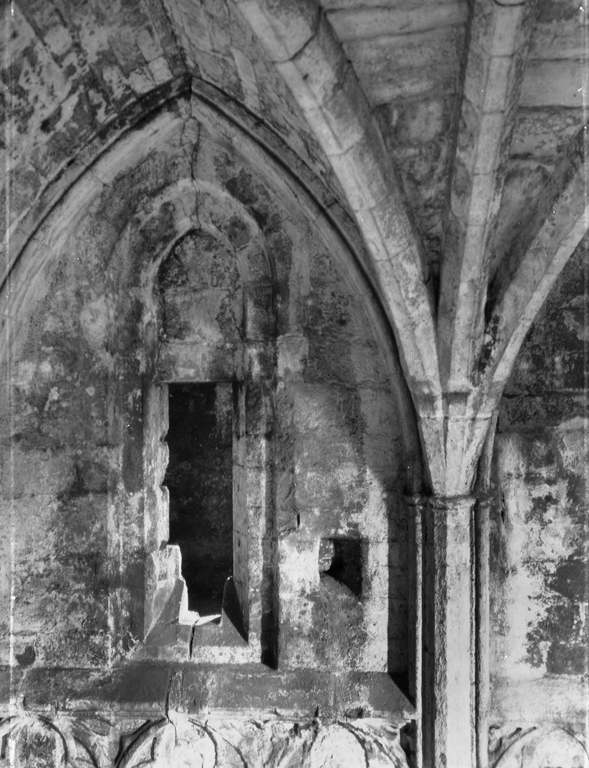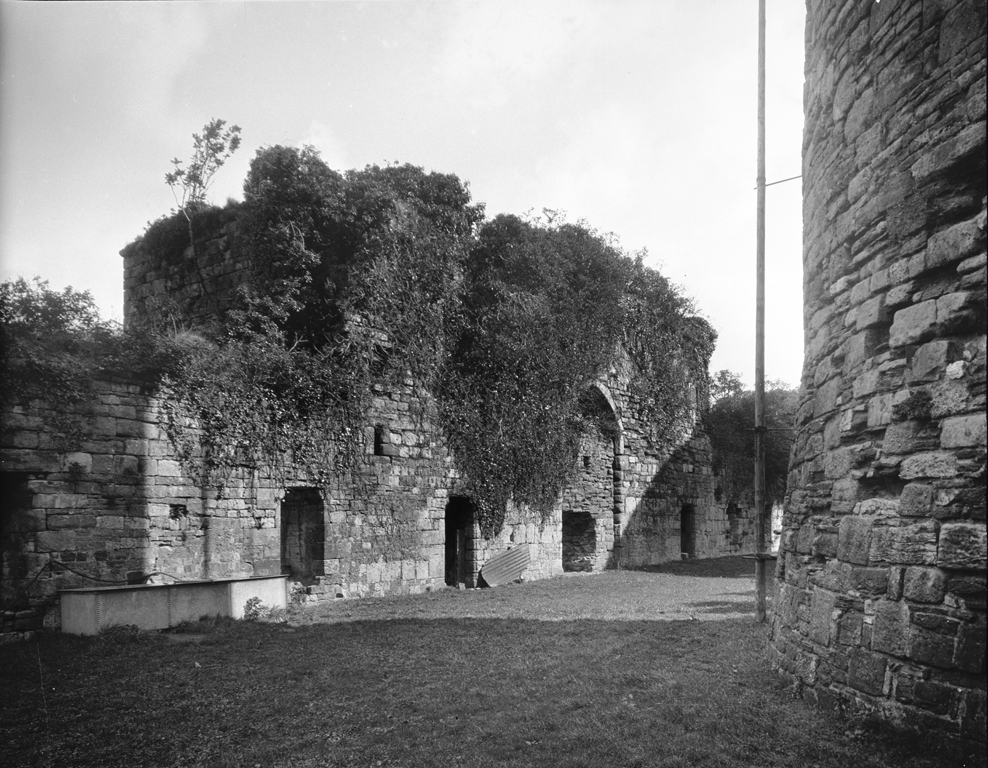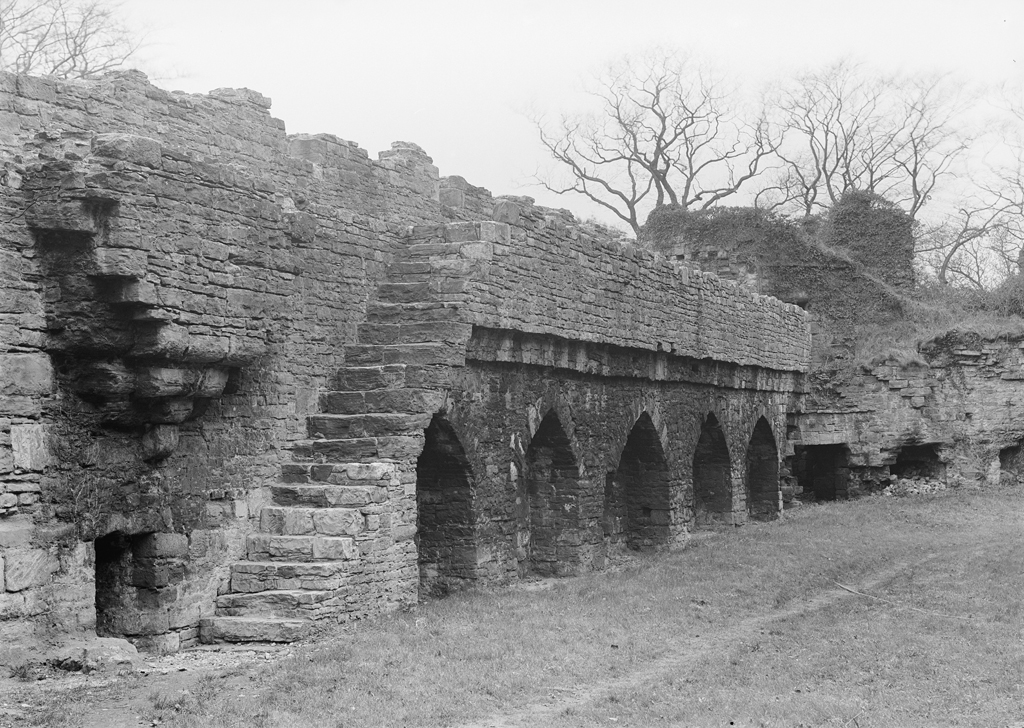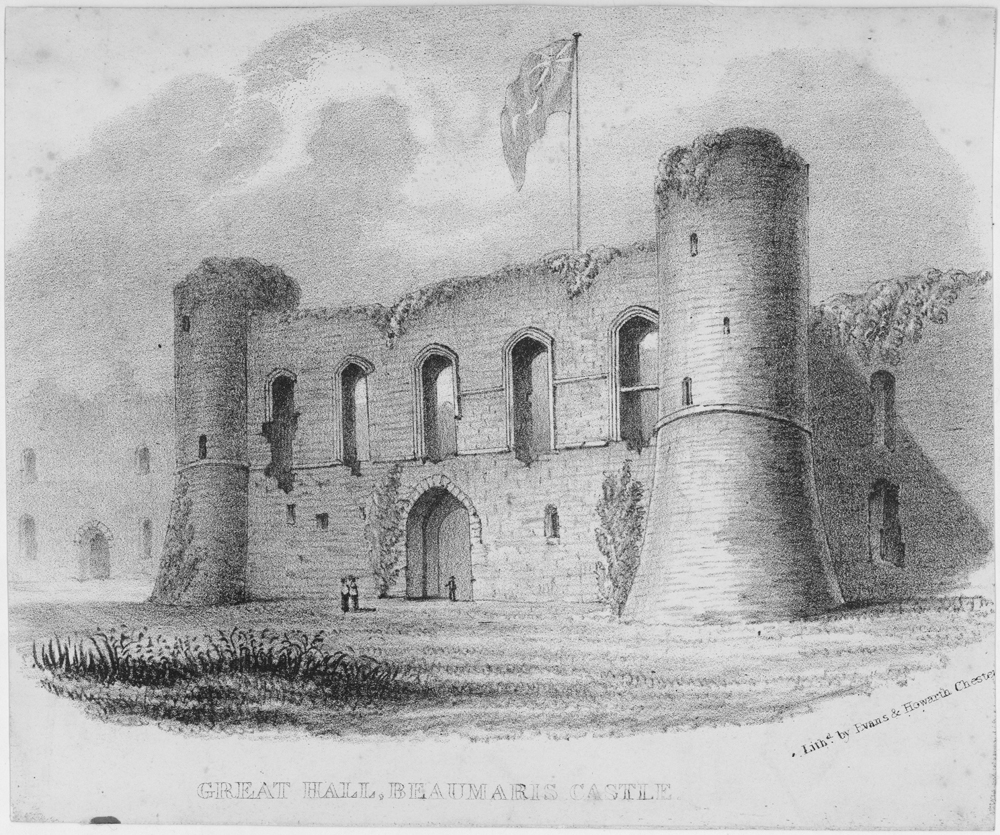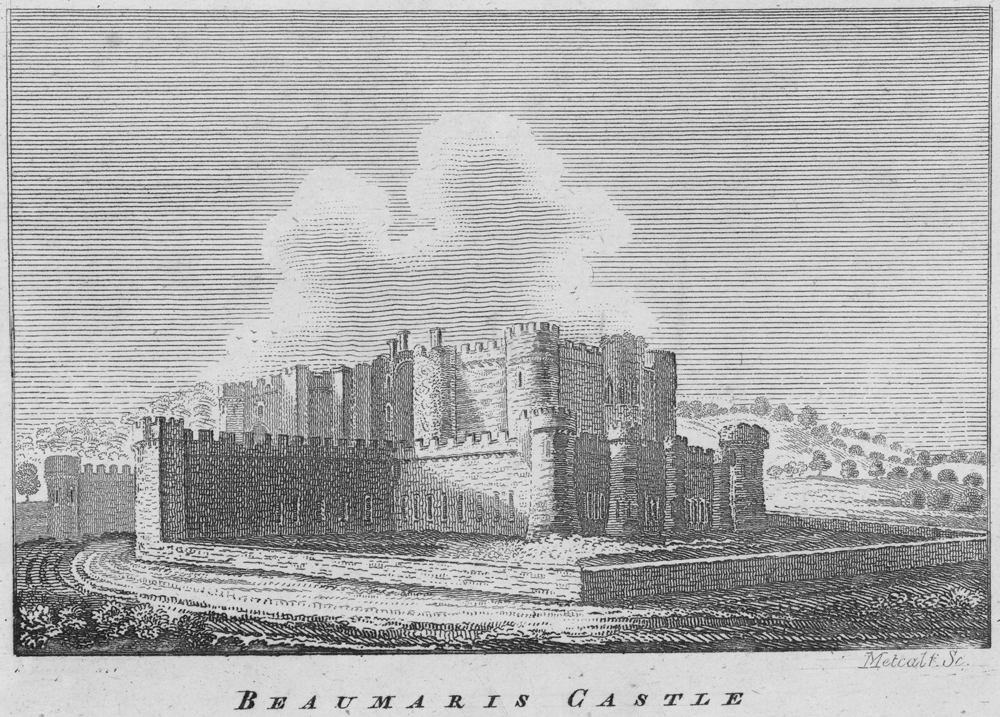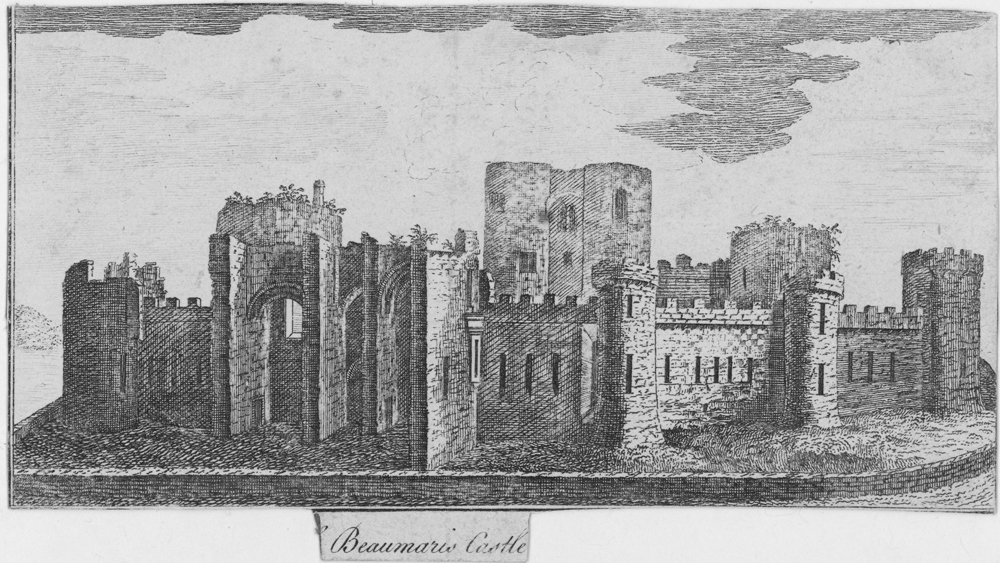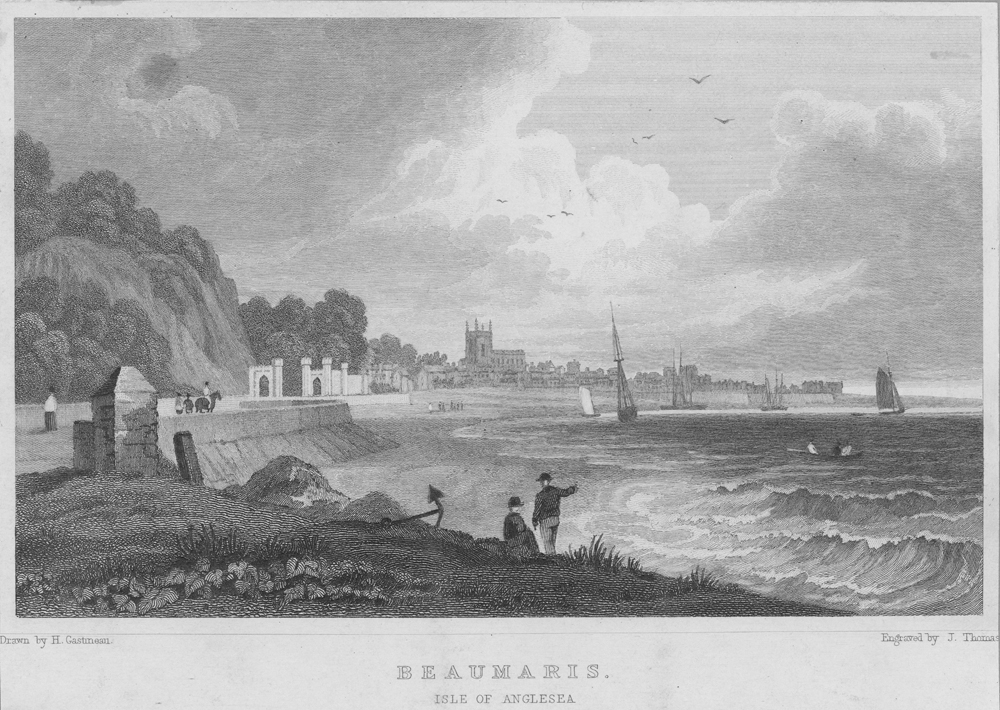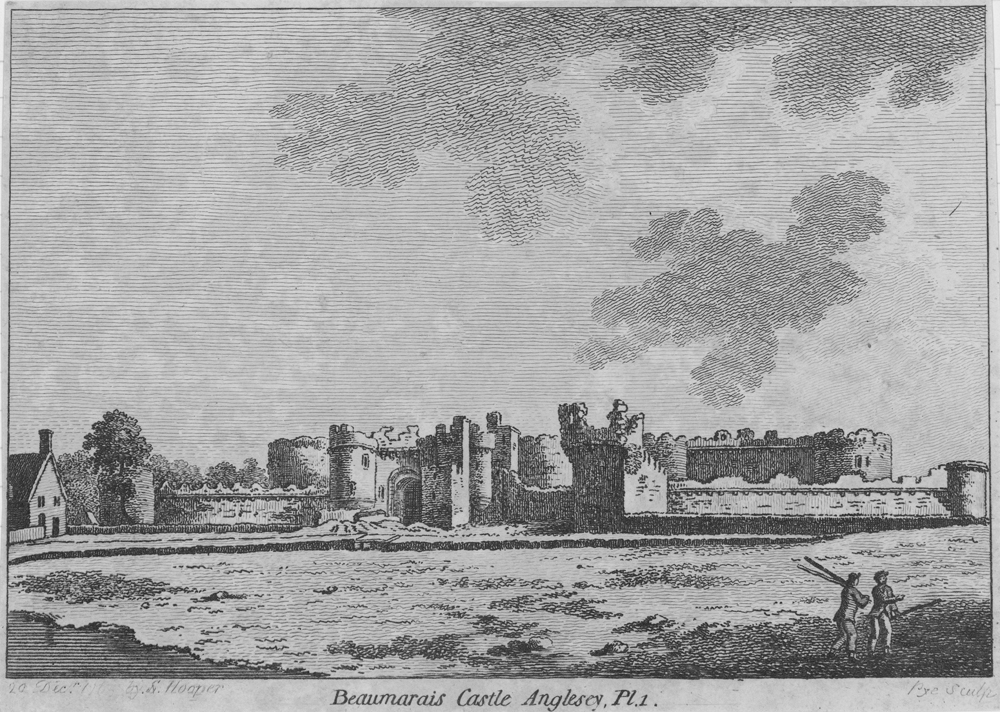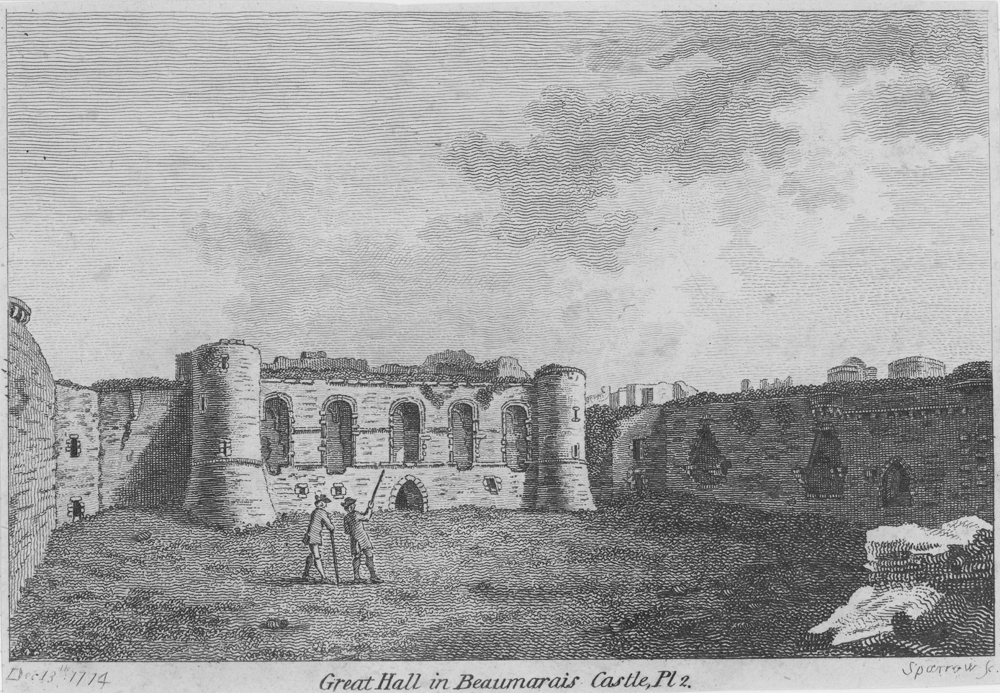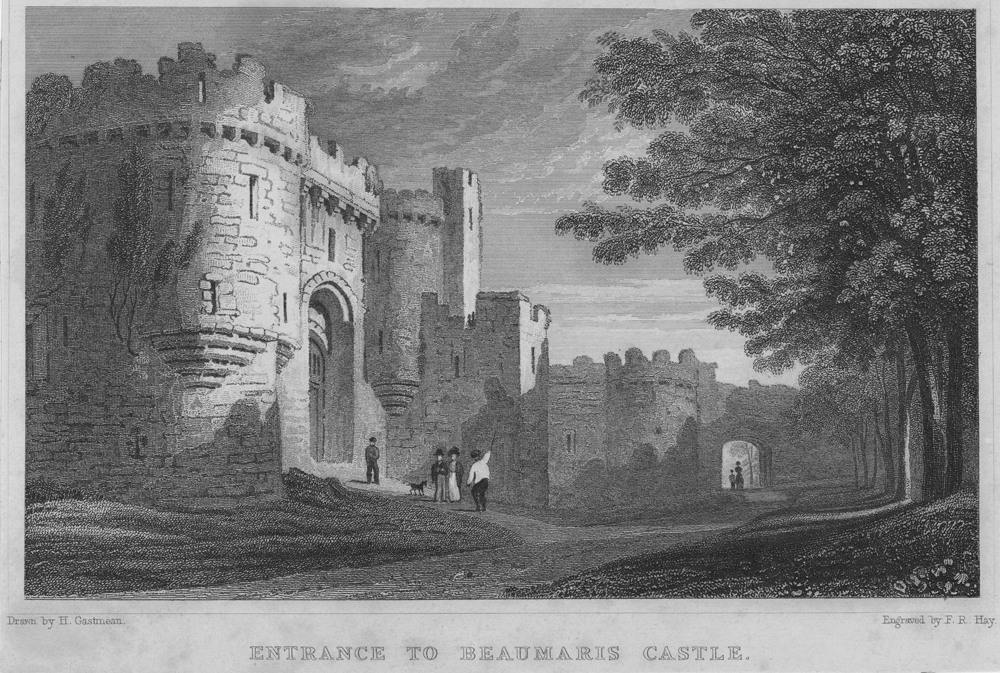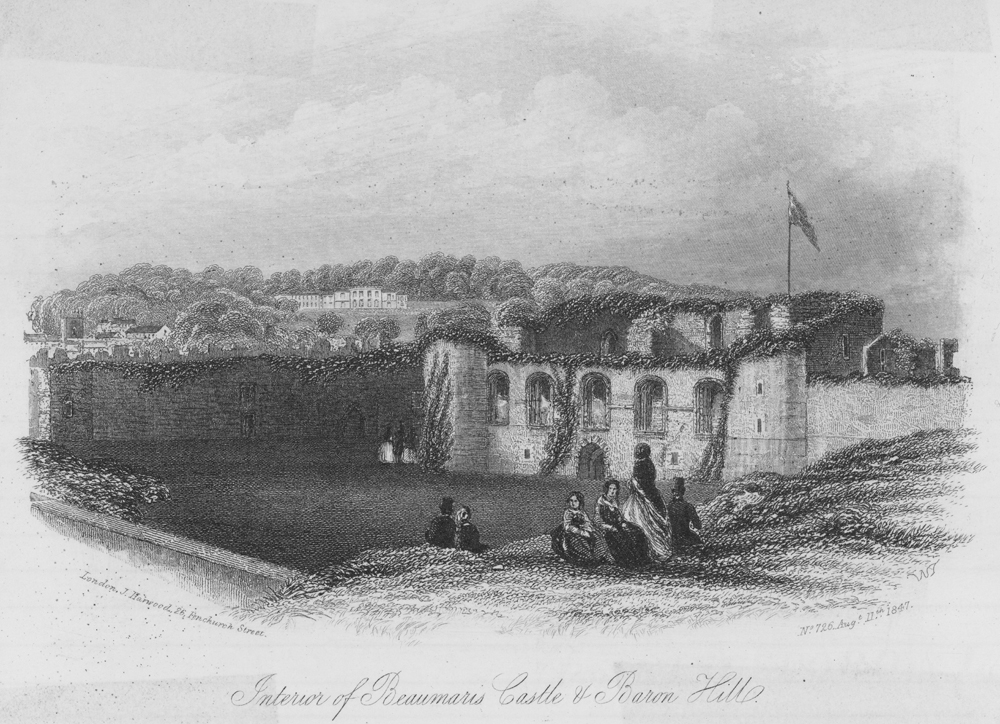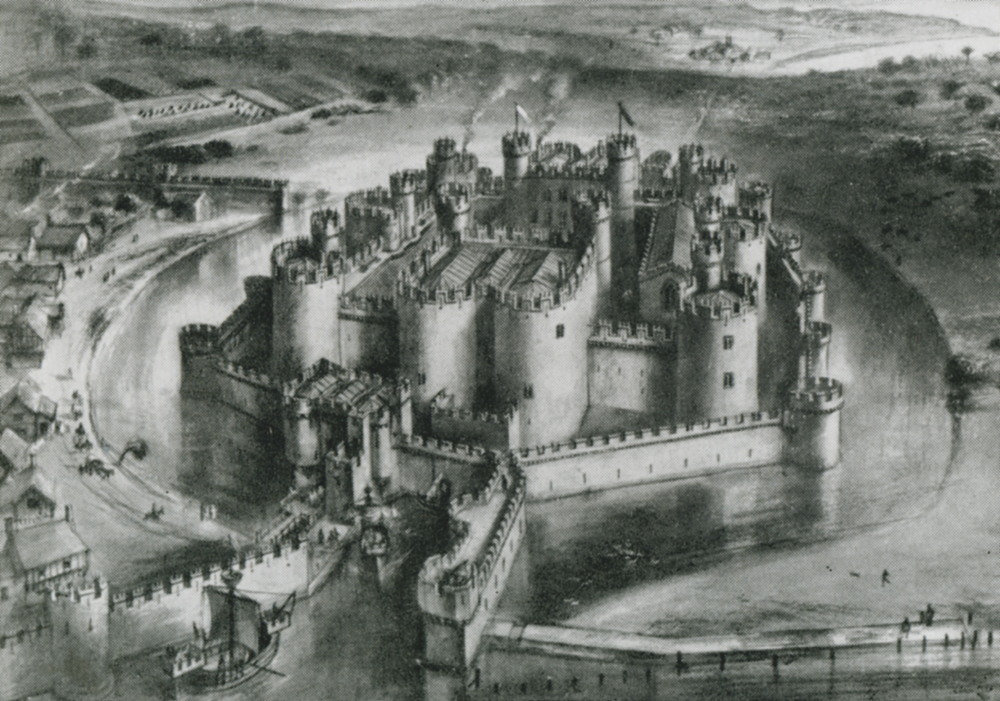Beaumaris Castle - Overview
Beaumaris Castle was the last castle to begin construction as part of Edward I’s ring of fortification around north Wales. Construction began in 1295, but progressed slowly and the intended towers and gates of the inner ward lack their upper storeys, giving the castle a low and unassuming aspect.
The strategic location and strict trade rules attached to the establishment of Beaumaris contributed to the development of the town and port into the financial and shipping centre of Anglesey up until the seventeenth century. Although the castle remained unfinished, its tactical situation made it a target of armed conflict. In 1403, rebels associated with Owain Glyndŵr captured Beaumaris and held it for two years and for three years during the English Civil War, the local Bulkeley family defended the castle for the King.
By the nineteenth century the moat surrounding Beaumaris Castle had silted up and the walls were largely overgrown with vines. Despite the outward dilapidation, Prince Hermann von Pückler-Muskau was delighted that the chambers inside the gate tower and the chapel were in good repair. But he took the gravest of exceptions with the tennis court which the Bulkeleys, the former defenders, had installed on the lawn of the castle yard. The castle is now a UNESCO world heritage site.
Accounts of Travel
Reise durch England, Wales und Schottland im Jahre 1816, 1816
Samuel Heinrich Spiker (1786 – 1858)
Ein Umweg, der uns über eine mit frischem Grün bedeckte Ebene führte, die sich am Meere hinzieht, brachte uns zum Castell, welches, gleichzeitig mit denen von Conway und Caernarvon, von Edward I. erbaut wurde. Zwei modernisirte Thürme, durch ein hohes eisernes Thor verbunden, bilden den Eingang gegen die Straße, an deren Ende es, auf gleicher Fläche mit der selben, liegt. Es scheint aus zwei länglichen Vierecken bestanden zu haben, von denen das äußere, größere, aber niedrigere, das innere, kleinere und höhere einschloß. – Ein großes Bogenthor, zwar nicht so stattlich als das von Caernarvon-Castle, aber eben so gut erhalten, führt in den Zwinger, von wo aus man durch ein zweites Thor in den großen inneren Hof gelangt, der 190 Fuß im Quadrat hat. Dem Eingange gegenüber fallen sogleich die Ueberbleibsel einer prächtigen Halle in das Auge, die zwei Stockwerke und fünf Fenster hatte, und deren Bogenthor dem Eingange zum Hofe gerade gegenüber steht. An den Wänden umher sieht man noch die Spuren der Kamine. Ein Theil des Hofes ist zu einem großen Ballplatze (tennis-court) eingerichtet, da die Engländer das Ballspiel noch ganz methodisch treiben, und es nächst dem cricket (Erdball-Spiel) zu ihren Haupt-Bewegungsspielen gehört.
Eine halb zerbrochene Treppe hinauf, und den Windungen vieler dunkelen Gänge, in einem der Eckthürme folgend, gelangten wir oben auf die Mauer, und sahen nun das Castell mit seinen mannichfaltigen Abtheilungen ausgebreitet und wie im Risse vor uns liegen. Ueber das östliche Thor hinweg stiegen wir eine Treppe hinab, die zu der Kapelle führt, welche, der Größe des Castells unangemessen, sehr klein ist, und nur drei schmale Fenster hat, aber so vollständig erhalten ist, daß man das schön gearbeitete Kreuzgewölbe der Decke noch in seiner ganzen Vollkommenheit über sich sieht. Ein gegenüberliegender Thurm, aus dem ich durch mein Hineintreten eine große weiße Eule aufscheuchte, scheint zu Wohnzimmern eingerichtet gewesen zu seyn: wenigstens sieht man noch die Bänke, an den Fenstern, in der Mauer befestigt. Die Treppe ist zusammengestürzt.
We proceeded by a circuitous road over a plain covered with fresh verdure, which runs along the sea side to the castle, built by Edward I., at the same time with those of Conway and Caernarvon. Two modernized towers, connected with each other by a lofty iron gate, form the entrance from the street, at the end of which, and on the same level with it, the castle stands. It appears to have consisted of two oblong squares, the outermost of which the largest, though lowest, enclosed the interior, which is smaller but higher. A large arched gate, not indeed so splendid as that of Caernarvon Castle, but in equal preservation, opens into the outer court, from which through a second gate, we enter the great inner court, which is 190 feet square. Immediately, opposite to the entrance we are struck with the remains of a splendid hall of two stories, with five windows, and of which the arched gate stands exactly opposite to the entrance into the court. We can still see the marks of the chimneys along the walls. One part of this court is fitted up as a large tennis court; for the English still pursue the game of fives or ball-playing most methodically, and next to cricket it is their chief active sport.
Ascending a half broken stair case, and following the windings of several dark passages in one of the corner towers, we reached the top of the wall, and now saw the castle with its various divisions extended before us, as in a sketch. Passing over the eastern gate, we descended a stair leading to the chapel, which is very small, and unsuited to the size of the castle. It has only three narrow windows, but it is in such good preservation, that we can still see the beautifully wrought cross vaulted ceiling, in all its perfection above us. A tower situated on the opposite side, from which by our entrance, we scared a large white owl, appears to have been fitted up for dwelling rooms. At least we saw benches under the windows still remaining fastened to the wall. The staircase had fallen down.
Briefe eines Verstorbenen, 1828
Hermann von Pückler-Muskau (1785 – 1871)
Hier befindet sich ein andres von Eduard I. erbautes und von Cromwell zerstörtes Schloß, das einst noch größer als das in Caernarvon war, (denn es bedeckt noch jetzt 5 Morgen Landes) aber als Ruine weniger pittoresk erscheint, da es alle seine Thürme verloren hat. Um es genau zu besehen, muß man auf den schmalen, und sehr hohen, verfallenen Mauern entlang gehen, die durch nichts geschützt sind. Der Knabe mit den Schlüsseln lief zwar wie ein Eichhörnchen darauf hin, der Barbier aus der Stadt aber, der sich mir beim Debarkiren als Führer angeboten, und mich bis hierher gebracht hatte, ließ mich nach den ersten Schritten im Stich. Diese Ruine liegt in dem Park des Herrn Bulkley, welcher sehr unpassend ein Tenniscourt (Ballspiel) darin angelegt hat.
Here is another castle built by Edward I., and destroyed by Cromwell; it was originally even of greater extent than that at Caernarvon, and covered five acres of ground; but the ruins are less picturesque, in consequence of its having lost all its towers. To see it thoroughly one must walk along the narrow and lofty walls, which are wholly unprotected. The boy who keeps the keys ran along; like a squirrel; but the barber of the town, who offered his services as guide when I landed, left me in the lurch at the first step. The ruin stands in the park of a Mr. Bulkley: with singular bad taste he has made a tennis-court within its enclosure.

